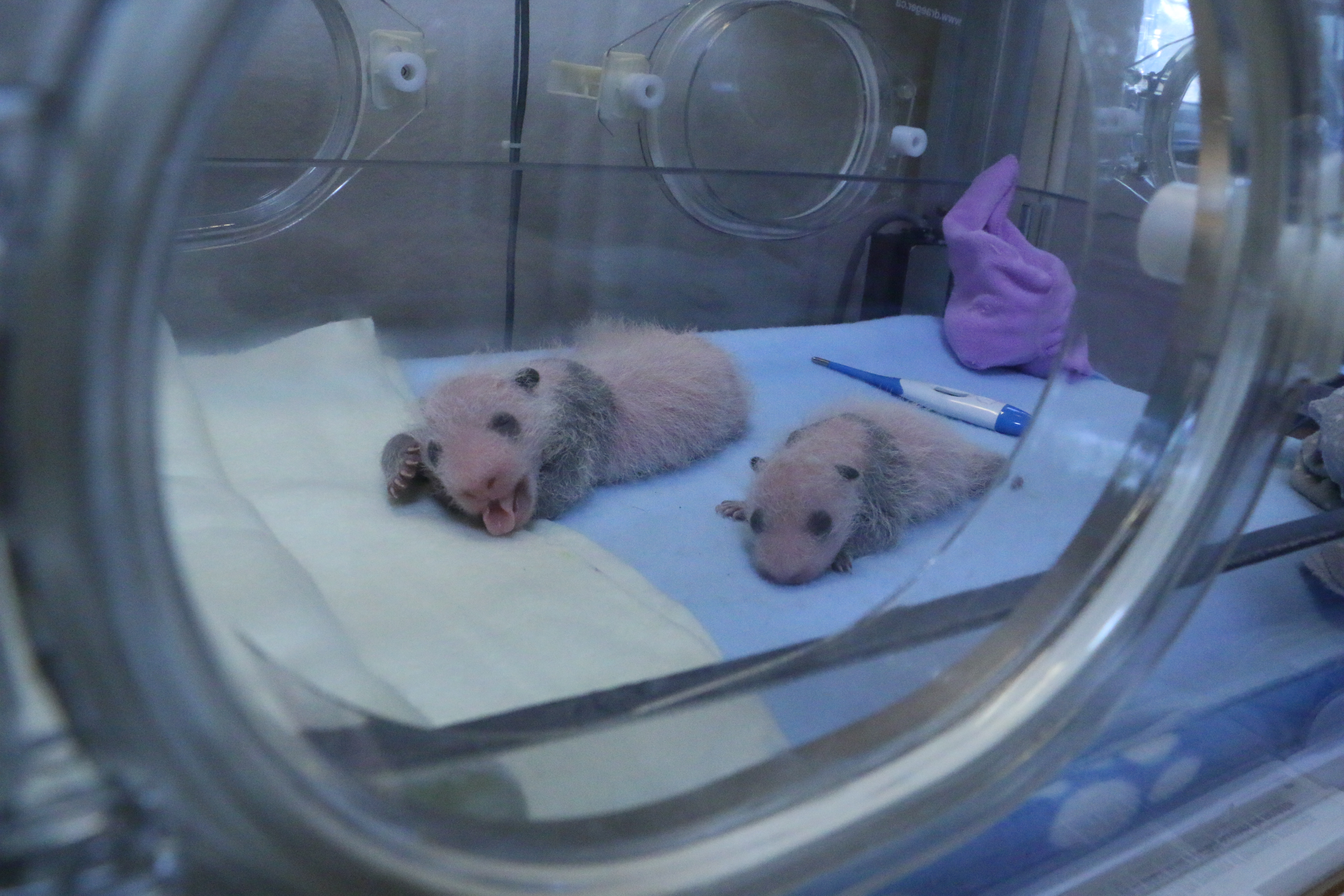
Earlier this month Er Shun and Da Mao, the giant panda pair on loan from China to the Toronto Zoo, became the proud parents of two healthy cubs. Now zoo staffers and Chinese experts are working round the clock to ensure everything continues to go smoothly.
Dr. Chris Dutton, the head of veterinary services at the Toronto Zoo, says this year’s success comes on the back of last year’s failed attempt. In the winter of 2013 when the pair arrived at the zoo, though conservationists had determined the two were an ideal genetic match, they’d never met. And when they did, Da Mao was a little too young to go about the business properly, so the team went to Plan B—artificial insemination. Things didn’t take, but clearly Er Shun, whose name means double smoothness, was ready and waiting, experiencing a pseudo pregnancy, evident by hormones in her pee.
‘This year we think our timing was better, but the proof is in the pudding,’ says Dutton. ‘And we couldn’t be happier.’ These are the first giant pandas born on Canadian soil.
Monitoring Er Shun’s hormones closely, Dutton feels the team was more tightly aligned with the mother-to-be’s schedule, inseminating her with both fresh semen from Da Mao and frozen samples from China. The giant panda mating game is incredibly time sensitive, and short-lived. Females only come into estrus, or heat, once a year, and it only lasts two or three days.
Dutton credits the zoo caretakers for making a lot of the hands on panda work easier. ‘Towards the end Er Shun was having to lay on a table and let me ultrasound her belly a couple times a week, without much complaint,’ he says. ‘And we had to sedate her several times over a 12-hour period during insemination.’
Dutton says the team calculated Er Shun’s date would be October 14, but the eager mother beat them to it. Around 1 pm on the 13th her water broke and by 3:30 the first cub had arrived. About ten minutes later, the second cub was born.


Photo by Toronto Zoo

Photo by Toronto Zoo

Photo by Toronto Zoo
Now the truly tricky part begins. In the wild, mother panda’s will usually neglect the second cub altogether in cases of twins—putting everything she’s got into the first, usually larger, more dominate cub. To avoid this scenario, the two will alternate between an incubator, provided by the Toronto Hospital for Sick Children, and their mother’s care. Dutton says Er Shun took to motherhood right away, and is easily distracted by a sweet concoction when it’s time to switch the twins.
‘This will continue every 2-3 hours for the next 6 months or more,’ he says. ‘Some staffers are even sleeping in the panda house to make sure the family gets just what they need.’
He says the second cub is quite a bit smaller than its sibling, which could either be because it developed slower, or had a different Daddy.
The cubs will keep growing at giant panda rates, and will stick with their mum for a long time. Dutton says in the wild they think it takes the bear’s two years to fully wean, but right now Er Shun is likely just ready for the stage when she can put them down. Dutton says he won’t relax for another few months either, but adds the payoff is well worth all the work.
